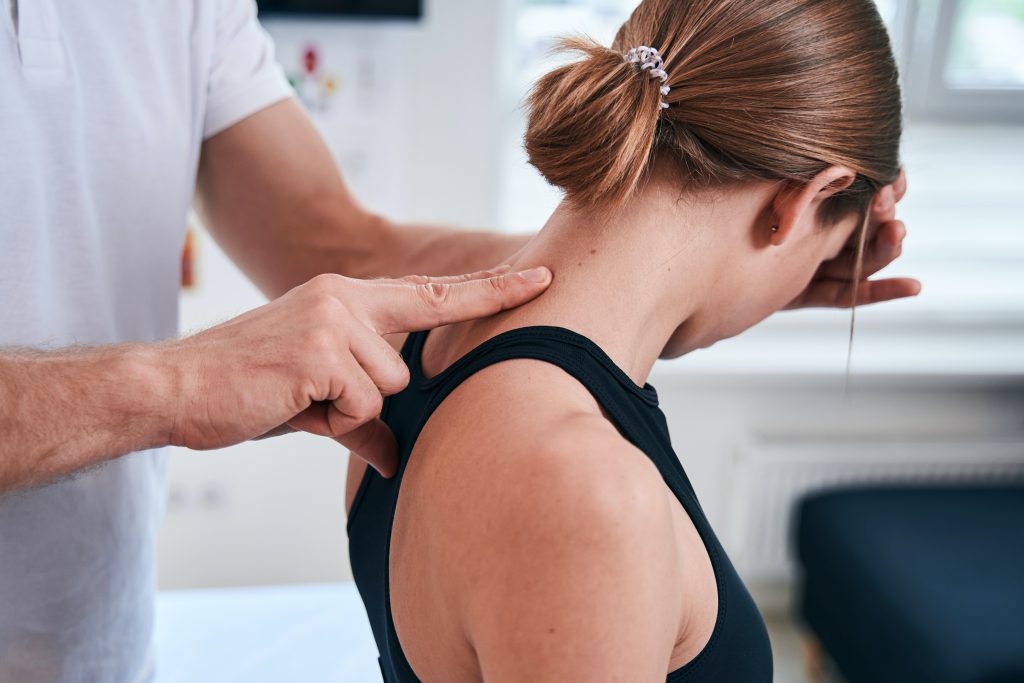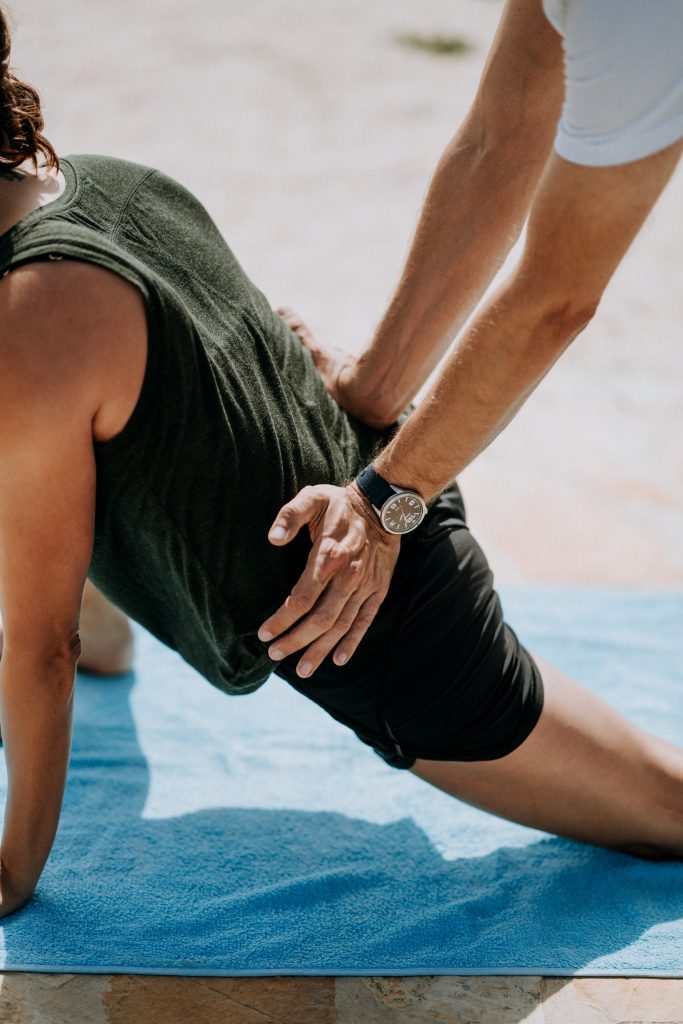OSTEOPATHY
WHO ARE OSTEOPATHS?
Osteopathy is a holistic approach to healthcare that aims to restore the normal function and stability of the body. It is based on the principle that the body is a self-healing system and that the osteopath can help to facilitate this process by using their hands to treat the body in a variety of ways, including massage, stretching, and articulation.
Osteopaths are able to treat ACC claims patients without referral from a medical doctor and refer for x-rays, Ultrasounds, and to other health professionals as required.

WHAT IS OSTEOPATHIC MEDICINE?
Osteopathic medicine uses Osteopathic Manipulative Technique (OMT) to correct structural abnormalities within the body to assist the to return to good health and to alleviate dis-ease.
One of the guiding principles of osteopathic medicine emphasizes treatment of the body as a whole. This requires assessment of muscles, joints, ligaments, fasciae, vascular and neural structures. The correction of any problems found will aid the recuperative powers of the body and the return to health.
Osteopaths treat a wide range of problems that the body can suffer throughout life. A body that is not functioning properly will often give an alarm that manifests as back pain, neck pain, headache, generalized muscle ache and many other physical and functional disorders. These problems can manifest anywhere where the compensation fails to cope! Hence it is important to get to the source of the problem.
Bodies can stop function well due to acute injury or accumulated from occupational stress and repetitive strains. Pain is an alarm indicates something not working well within ourselves. The osteopath will get to the bottom of the problem by finding out what structure is not functioning properly. Often these structural components can be in the most unexpected places, hence a hands on examination is necessary to determine the source of the problem.

I am text block. Click edit button to change this text. Lorem ipsum dolor sit amet, consectetur adipiscing elit. Ut elit tellus, luctus nec ullamcorper mattis, pulvinar dapibus leo.
Osteopathy has been shown to be effective for a wide range of conditions, including:
- Back pain
- Neck pain
- Headaches
- Sports injuries
- Arthritis
- Digestive problems
- Respiratory problems
- Menstrual cramps
- Pregnancy-related pain
Osteopathy was founded in the late 1800s by physician and surgeon Andrew Taylor Still in Kirksville, Missouri. Still was dissatisfied with the medical treatments of his time, which often relied on harsh drugs and surgery. He believed that the body had the ability to heal itself, and that osteopathic manipulation could help to remove the obstacles to healing.
Still’s philosophy was based on the following principles:
The body is a unit. All parts of the body are interconnected and interdependent.
Structure governs function. The structure of the body determines how it functions.
The body has the ability to heal itself. The body has innate healing mechanisms that can be activated and supported by osteopathic treatment.
Still developed a variety of osteopathic manipulative techniques (OMTs) to treat a wide range of conditions. He taught his techniques to others, and the first school of osteopathy was founded in 1892.
Osteopathy quickly spread throughout the United States and to other countries around the world. Today, osteopathy is a recognized and respected form of healthcare. Osteopathic physicians (DOs) are licensed to practice medicine and surgery in all 50 states.
Here are some of the key milestones in the history of osteopathy:
1874: Andrew Taylor Still performs the first osteopathic treatment.
1892: The American School of Osteopathy is founded in Kirksville, Missouri.
1898: The American Institute of Osteopathy is founded.
1915: The first osteopathic hospital is founded in Detroit, Michigan.
1935: The American Osteopathic Association is founded.
1964: The first osteopathic medical school is accredited by the American Medical Association.
1976: DOs are granted full parity with MDs under Medicare.
2005: The National Institutes of Health (NIH) establishes the National Center for Complementary and Integrative Health (NCCIH), which includes an office for osteopathic research.
Today, there are over 100,000 DOs practicing in the United States. DOs are represented in all medical specialties, including primary care, pediatrics, obstetrics and gynecology, internal medicine, and surgery.
WHO CAN BENEFIT FROM TREATMENT?
EVERYONE!
The very young, the elderly, women going through pregnancy, pre and postpartum care.
Anyone with a feeling of unwell or unease. “Something just does not feel quite right!”
It can also be helpful for people who are simply looking to improve their overall health and well-being. Can help to improve posture, increase flexibility, and reduce stress.
Here are some specific examples of people who can benefit from the treatment:
- Athletes who are looking to improve their performance and prevent injuries
- Pregnant women who are experiencing pain or discomfort
- People with chronic pain conditions such as arthritis or fibromyalgia
- People who have recently suffered an injury, such as a sports injury or a car accident
- People with digestive problems such as constipation or acid reflux
- People with stress-related symptoms such as headaches, muscle tension, and insomnia

OSTEOPATHIC MANIPULATIVE TECHNIQUE (OMT)
is a hands-on treatment method that uses gentle stretching and massage to improve range of motion, relieve pain, and promote healing. OMT is based on the philosophy that the body is a self-healing system, and that by removing restrictions to the flow of blood and other fluids, the body can better heal itself.
OMT can be used to treat a variety of conditions, including:
- Musculoskeletal problems, such as back pain, neck pain, and arthritis
- Headaches
- Digestive problems
- Respiratory problems
- Menstrual cramps
- Asthma
OMT is performed by a doctor of osteopathic medicine (DO). DOs are licensed physicians who have received additional training in osteopathic principles and techniques.
During an OMT session, the DO will use their hands to palpate (feel) your muscles and joints to identify any areas of restriction. They will then use a variety of techniques to release these restrictions and improve range of motion. OMT techniques can include:
- Stretching
- Massage
- Muscle energy techniques
- Articulatory techniques
OMT is generally safe, but it is important to talk to your DO about any potential risks before starting treatment. Some people may experience mild side effects, such as soreness or stiffness, after treatment.
Here are some of the benefits of OMT:
- It can help to relieve pain.
- It can improve range of motion.
- It can promote healing.
- It can reduce inflammation.
- It can improve circulation.
- It can boost the immune system.
- It can reduce stress and anxiety.
This range of techniques allow the osteopath to treat a wide range of problems. Those that have experienced osteopathic treatment have come to realize OMT is complementary to their current medical care. Often OMT can help reduce the volume of medications they are on for the management of pain. This is always done in conjunction with the patient’s medical General Practitioner as osteopathic treatment is complementary with medicine, not alternative!
Some other services Click here
For more information please visit The New Zealand Registration of Osteopath at www.osteopathsnz.co.nz
